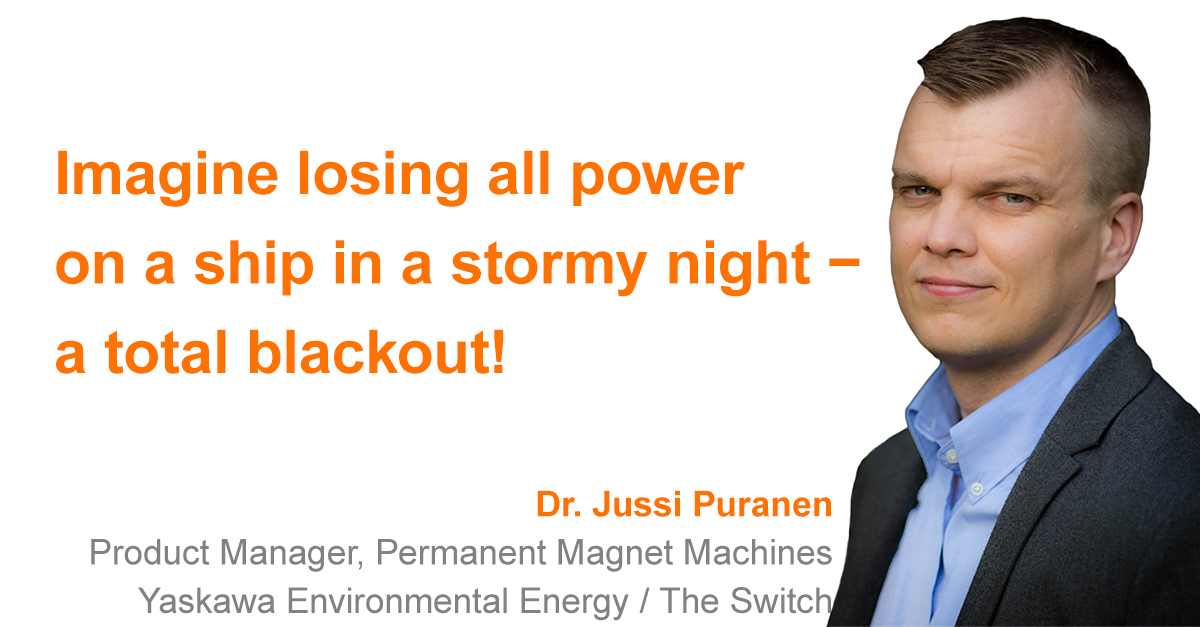Imagine being on a ship in a storm at night along a rocky coast. Then you lose all power. A total blackout! For this reason, power systems aboard vessels are often split into parallel redundant units to ensure power production and the ship’s safety. Although good for safety reasons, this increases the number of components, takes up space and escalates installment and maintenance costs.
Conventionally, redundancy has been added by having several parallel genset units or shaft generators to ensure power production. With electric propulsion, two or three electric motors are used to propel the vessel. In such a case, any single failure in the electric system will typically not cause more than a 50% loss in power.
Yaskawa Environmental Energy has a fresh approach to creating redundancy. Safety and power availability can be improved without increasing the complexity or the cost of the system.
Ultimate redundancy in entire power generation system
Yaskawa Environmental Energy has tackled this issue by making all components of the entire power generation system redundant. This means that the electromagnetic circuit of the permanent magnet (PM) motor/generator is divided into fully independent sub-sections, using parallel windings on the stator. Each sub-section has its own power circuits, controls and cablings, enabling them to operate independently from each other.
Power generation with DC-Hubs
The flexibility of The Switch DC-Hubs – in effect frequency converters – enables them to be used as standby or active power sources in case of a power cut. This can be done by connecting a battery to each DC-Hub and operating them like generators. So, if all diesel engines go down, the batteries can be used as generators, giving the crew plenty of time to start one engine up again.
The paralleled winding design of the PM motors/generators and the flexibility of the DC-Hubs increase the overall power redundancy on board the ship. For example, in the case of two parallel windings and two frequency converters, the loss of a single component results in only a 50% loss of power instead of the normal 100%. With electric propulsion, this means only ~30% reduction in vessel speed, allowing the vessel to maintain cruising speed.
EBL stops faults dead
Pairing the DC-Hub with a The Switch Electronic Bus Link (EBL) breaker increases redundancy even further. The EBL ensures selectivity between the DC-Hubs. It cuts and isolates a possible faulty DC-Hub in microseconds, leaving the healthy DC-Hubs unaffected. And so, several DC-Hubs can be connected in a ring configuration, and even operate as a closed DC ring in DP3 operations.
